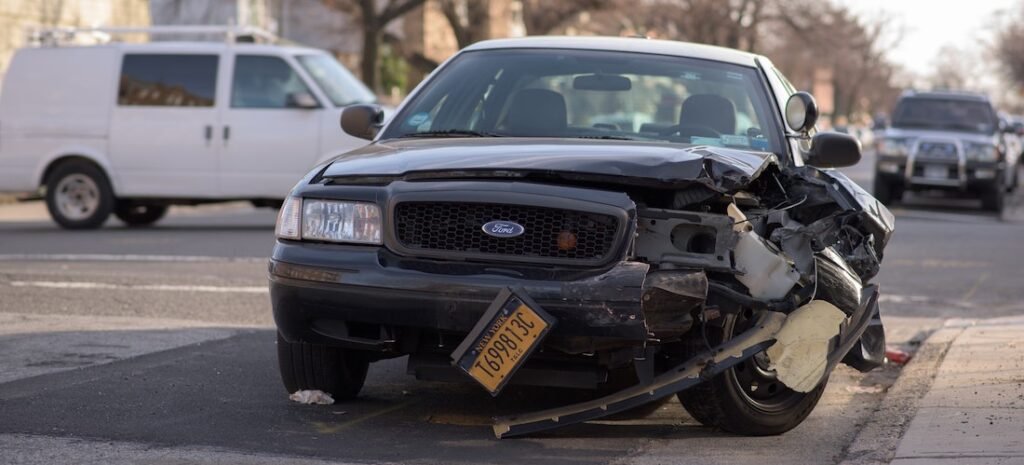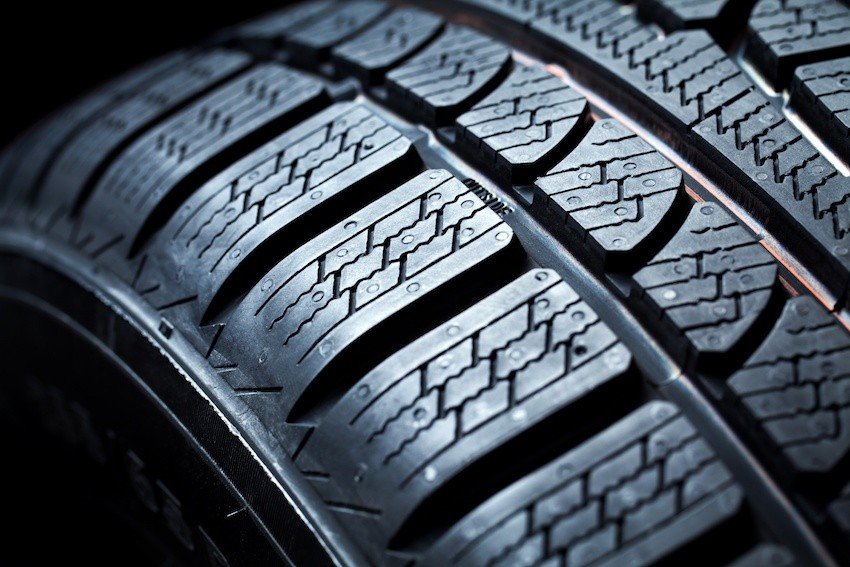Daniel Davidson, MD, MBA, DBA, PHD
Introduction:
Accidents involving transportation can have terrible outcomes, including fatalities, serious injuries, and lifelong suffering for survivors and their families. These incidents—which range from automobile accidents to aircraft crashes—highlight the inherent hazards connected to contemporary transportation networks. The human cost of transportation accidents is examined in this article along with its effects on people, communities, and society at large.
The Toll of Road Collisions:
Tragically, traffic accidents take a terrible toll on people, families, and communities, leaving a path of destruction that goes well beyond the scene of the incident. Each collision is more than simply a statistic; it’s a human tragedy with long-lasting effects.
The lives lost in traffic accidents are the primary cause of death. Every death is a representation of an individual with hopes, dreams, and loved ones still alive. Communities struggle with the unexpected and frequently senseless loss of life, shattering families and leaving them in mourning. The depth and persistence of the sadness felt by those left behind permanently change the very fabric of their lives.
Road accidents can result in a variety of injuries, from little cuts and bruises to serious trauma and permanent impairments. Road accident survivors frequently have a difficult time recovering, going through excruciating operations, prolonged rehabilitation, and leaving them with emotional scars that might never completely fade. These injuries can have a devastating effect on a person’s physical and mental health, affecting all facets of their life and leaving long-lasting scars that go well beyond the obvious wounds.
Road accidents have a lasting impact on society that extends beyond the immediate victims. Healthcare systems are under pressure to treat the wounded and offer long-term assistance and care. Responding to crash sites is an incredibly difficult responsibility for law enforcement and emergency services, since they frequently have to see scenes of unfathomable misery. Insurance companies deal with the financial consequences, handling claims and negotiating difficult court cases.
The financial toll that auto accidents take is enormous. The financial impact of lost production, medical expenditures, property damage, and legal fees is shared by governments, corporations, and individuals. Road accidents have far-reaching costs that go beyond the immediate aftermath, affecting society at large and depleting resources that may be used for other urgent needs.
Airplane Crashes and Their Aftermath:
Even while planes are usually thought of as safe forms of transportation, accidents can have disastrous results. There are many different and intricate reasons why aircraft accidents occur, ranging from mechanical issues to pilot error. Every incidence attracts close attention and a thorough examination in an effort to determine what caused the disaster.
The death toll and the intense anguish that befalls the victims’ families and friends make the human cost of airline catastrophes glaringly obvious. Communities are left in shock and grieving as a result of these incidents’ sudden and unexpected character, which amplifies their impact. After the initial shock has passed, survivors may experience psychological difficulties such as PTSD, survivor’s guilt, and others.
Immediate Impact:
An airplane accident usually results in a state of turmoil, sadness, and uncertainty. Families wait tensely for word of their loved ones, while first responders race to the scene to offer comfort and support. Following a collision, there is a rush of activity as rescue crews search for survivors and gather the remains of the dead.
It is a terrifying and traumatizing experience for survivors of airplane disasters. They might experience psychological distress, bodily wounds, and survivor’s guilt. Survivors of airplane crashes must deal with the memories and emotional wounds of the experience because of how abrupt and severe the crashes are.
Investigation Procedure:
In order to identify the reason of an aviation crash and stop future occurrences of the same kind, a comprehensive investigation is carried out after the incident. A number of parties are involved in this procedure, including representatives from the airline and aircraft manufacturer, accident investigators, and aviation regulators.
The lengthy and rigorous research procedure can take months or even years to finish. To piece together the sequence of events that led up to the catastrophe, investigators examine voice recordings from the cockpit, flight data, and wreckage debris. To find contributing elements and primary causes, they also look at things like weather, mechanical issues, and human error.
Long-Term Effects:
The ripple effects of aircraft disasters go well beyond their initial collision, influencing not just the lives of survivors but also those of victims’ relatives and the aviation community as a whole. Victims’ families have to deal with grieving for their loved ones, going through court cases, and facing financial difficulties.
The road to rehabilitation for those who survive airplane disasters is sometimes difficult and drawn out. As they work to reconstruct their lives, they might have chronic pain, physical limitations, and post-traumatic stress disorder (PTSD). Surviving a plane accident can have a profound emotional impact, necessitating continuous counseling and support to help deal with the trauma.
Public Transportation Accidents:
Accidents involving public transportation can have detrimental effects on travelers, onlookers, and entire towns. These occurrences, which include public transportation such as buses, trains, subways, and other vehicles, emphasize how crucial safety precautions and regulatory control are for urban mobility.
Accident Causes:
A number of things can lead to an accident in public transportation, such as operator error, mechanical breakdowns, inadequate infrastructure, and unfavorable weather. Mechanical problems that impair vehicle safety and cause accidents include engine problems, electrical problems, and braking failures. Reckless driving, speeding, and exhaustion are examples of operator mistake that can lead to collisions and derailments. Furthermore, there may be dangers to the operation of public transportation due to improper maintenance of infrastructure, including rails, signals, and stations.
Effect on Passengers and Bystanders:
Serious accidents involving public transit can have fatalities, serious injuries, and psychological stress. damage that occur to passengers on buses, trains, or subways can range from little cuts and bruises to severe fractures and internal damage. Sometimes, when a car crashes, passengers may be flung from their seats or trapped inside, worsening their injuries. Accidents involving public transportation vehicles may also have an impact on bystanders, such as pedestrians and drivers, and may result in injuries or fatalities.
Service Interruptions:
Mishaps involving public transportation may result in service interruptions that impact commuters and tourists who depend on these networks for their daily mobility. Transit agencies may have to halt operations or rearrange them after an accident in order to look into what happened, remove any debris, and fix any structural damage. Passengers may experience annoyance and inconvenience as a result of delays and service interruptions that interfere with their travel arrangements.
Impact on the Community:
The effects of accidents involving public transportation go beyond the individuals who are immediately harmed and the passengers involved. The aftermath of such accidents may affect entire communities, with local businesses, social activities, and economies being negatively impacted by disruptions to transportation services. Furthermore, there may be a negative impact on the public’s perception of transportation safety, which could result in a decline in ridership and public confidence in public transportation networks.
Safety Measures and Prevention:
Transit agencies put in place a number of safety procedures and guidelines to lessen the likelihood of mishaps involving public transportation. These could involve installing safety equipment like surveillance cameras and emergency exits, training personnel and operators, adhering to operational rules and speed limits, and performing routine maintenance and inspections of infrastructure and vehicles. Regulatory bodies also keep an eye on public transportation operations to make sure safety rules and regulations are followed.
Economic Impact:
Significant financial consequences are associated with transportation accidents, including lost productivity, medical bills, and property damage and legal fees. The financial strain that these financial obligations can cause can worsen the human cost of such disasters for individuals, families, corporations, and governments.
Several crucial facts of the economic impact encompass:
Direct Costs:
Medical bills, auto replacements or repairs, and property damage are among the immediate financial costs associated with transportation accidents. These expenses may put a strain on people’s finances and their families, particularly in the event of serious injuries or fatalities.
Transportation accidents result in indirect costs as well as direct costs that affect the entire economy. These could include higher insurance costs for impacted parties, interruptions to supply chains and transportation networks, and lost productivity as a result of accidents or fatalities.
Healthcare Expenditures:
The cost of emergency medical care, hospital stays, rehabilitation programs, and long-term medical treatment for injuries is influenced by transportation accidents. These expenses put a pressure on healthcare systems and could lead to increased government, insurance, and individual healthcare spending.
Legal and Insurance Expenses:
Lawsuits, insurance claims, and settlements are frequently associated with transportation accidents. The financial load linked with accidents can be further increased by adding up legal fees, court charges, and insurance claims.
Reduced Workforce Productivity and Lost revenue:
Transportation accident injuries might result in a temporary or permanent disability, which lowers worker productivity and causes lost revenue. This has an impact on not just the accident victims directly but also their families and companies, who might have trouble filling positions or making accommodations for workers with disabilities.
Property Damage and Infrastructure Repair:
Cars, roads, bridges, and other infrastructure elements can sustain damage as a result of transportation accidents. In addition to requiring a large financial outlay, replacing or repairing damaged infrastructure can cause major disruptions to transportation networks.
Tourist and Travel Industry:
The tourist and travel industry may suffer from transportation accidents, especially those that include commercial transportation like trains, airplanes, and cruise ships. Travelers’ perceptions of safety hazards may discourage them from utilizing particular transportation options or going to particular locations, which could reduce tourism-related income and cause financial losses for the impacted areas.
Costs to Society:
Transportation accidents have wider effects on society than just the immediate financial ones. These include pain and suffering, a lower standard of living for accident victims and their families, and psychological trauma suffered by the communities they affect. Despite being challenging to measure, these intangible costs are important when determining the total social cost of transportation accidents.
Vulnerable Populations:
Vulnerable populations are subsets of the overall population that are more likely to face unfavorable results or obstacles when trying to obtain necessary services and resources. Vulnerable groups in the event of transportation accidents may consist of:
Smaller stature, impaired cognitive function, and a diminished capacity to perceive and react to hazards make children intrinsically more susceptible to transportation-related mishaps. Pedestrians, car passengers, and bikers may be at danger of harm or even death.
Elderly People:
The physical and mental limitations that older persons may experience can make it difficult for them to safely use transportation systems. Their vulnerability to accidents is increased as they age due to impaired vision, longer reaction times, and less mobility, especially whether they are driving or walking.
Those with limitations:
Using transportation services can be difficult for those with developmental, cognitive, sensory, physical, or other limitations. Their mobility may be severely hampered by inaccessible infrastructure, a shortage of lodging, and a lack of reliable transportation, which raises the possibility of accidents or injuries.
Low-Income Communities:
Low-income populations might be disproportionately affected by socioeconomic factors such as restricted access to dependable transportation, insufficient infrastructure in underdeveloped areas, and budgetary restraints. These people might be compelled to use less secure forms of transportation, like utilizing outdated cars with insufficient safety measures or walking or cycling along dangerous routes.
Rural Residents:
Long commutes to necessary services, few public transportation options, and badly maintained roads are just a few of the particular mobility issues that rural areas frequently confront. Residents may therefore be more vulnerable to delays and accidents involving transportation, and they may have less access to emergency medical care in the event of an accident.
Homeless People:
Those who are homeless may be more vulnerable to accidents involving mobility because of things like poor housing, restricted access to safe walking routes, and dependence on public transit. When navigating metropolitan areas, they could also be more susceptible to injuries and pedestrian accidents.
Populations of Immigrants and Refugees:
These groups are more susceptible to accidents and safety hazards ,because they may have language obstacles, cultural differences, and unfamiliarity with the transportation systems in their new towns. Their risk may be increased if they are unable to attend driver education courses or information about pedestrian safety.
Technological Solutions:
When it comes to solving transportation safety issues and lowering the human cost of accidents, technological solutions are vital. These significant technical developments and their effects are listed below:
Automobiles that operate on their own:
Since human error is a major contributor to accidents, autonomous or self-driving cars have the potential to completely transform the transportation industry. By navigating roadways and reacting to traffic conditions, these cars lower the chance of collisions through the use of sensors, cameras, and artificial intelligence algorithms.
Collision Avoidance Systems:
By offering real-time alerts and interventions, advanced driver assistance systems (ADAS), such as adaptive cruise control, lane departure warning, and automated emergency braking, assist drivers in preventing collisions. These devices help drivers maintain safe driving habits by spotting possible dangers using sensors and onboard computers.
Vehicle-to-Vehicle communication:
This technology allows cars to communicate with one another and share data, including position, speed, and direction, in an effort to foresee and avoid collisions. Vehicles can coordinate movements, identify blind spots, and proactively prevent accidents by exchanging data wirelessly.
Infrastructure Improvements:
By optimizing traffic flow, controlling congestion, and lowering the chance of accidents at intersections and high-risk locations, technological advancements in transportation infrastructure, such as smart traffic lights, intelligent transportation systems (ITS), and connected roadways, improve safety.
Predictive analytics:
By identifying patterns and trends in transportation safety data, data analytics and predictive modeling approaches can assist stakeholders in foreseeing possible dangers and taking proactive steps to avert accidents. Predictive analytics can help with decision-making and resource allocation for better safety outcomes by evaluating variables including weather, traffic patterns, and driver behavior.
Training with Virtual Reality:
Transportation professionals, pilots, and drivers can practice safe behaviors and emergency procedures in a controlled and realistic setting with the help of virtual reality simulators, which offer immersive training experiences. VR training improves situational awareness, decision-making, and skill development, which eventually leads to safer transportation operations.
Remote Monitoring and Diagnostics:
Fleet managers and maintenance staff can identify any problems and take preventative action by using connected car technology to provide real-time monitoring and diagnostics of vehicle performance. Transportation businesses may minimize the likelihood of mechanical breakdowns and maximize vehicle reliability by utilizing predictive maintenance algorithms, IoT sensors, and telematics.
Emergency Response Systems:
GPS and communication technologies are used by sophisticated emergency response systems, such as automated crash notification (ACN) and roadside assistance programs, to deliver timely aid to accident victims. Faster reaction times, better emergency service coordination, and better results for injured parties are all made possible by these methods.
Conclusion:
The devastating toll that transportation accidents take on lives serves as a stark reminder of the dangers that come with contemporary mobility. Although the frequency of these catastrophes has decreased due to technical developments and safety restrictions, they still occur and have disastrous repercussions. Recognizing and honoring the lives lost in these catastrophes is crucial as we try to make transportation safer and more resilient. We should also aim to prevent or reduce similar losses in the future.







